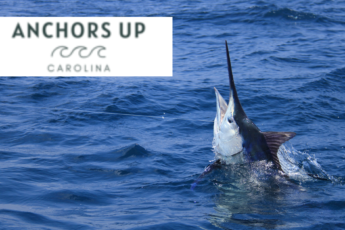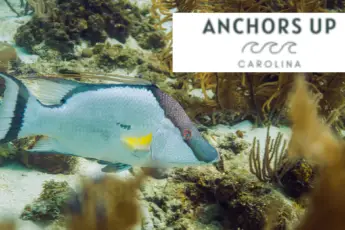The Lowcountry, referred to as Georgia, South Carolina, and North Carolina, has an abundance of inshore saltwater fish. Anglers have the opportunity to catch the fish from both a boat and a dock. Without a doubt, a day of fishing can lead to a cooler full of fish to prepare in various ways. One way in specific is preparing ceviche, otherwise known as cebiche.
What Is Ceviche
Recipes vary when it comes to the preparation of ceviche. However, I have prepared it myself frequently and always use the same ingredients and quantities every time.
Importantly, preparing this meal does not require any cooking device whatsoever. Leave the grill, oven, cooktop, and anything else imaginable in the off position. Instead, the juices from the citrus cook the fish or shrimp.
In addition to fish or shrimp, the recipe combines ingredients including lemons, limes, Roma tomatoes, cilantro, red onion, and jalapenos.
Without a doubt, cebiche does not require the use of heat. Instead, add the ingredients to a mixing bowl, stir, and allow to marinate covered and refrigerated.
It should be noted that ceviche requires a minimum marinating time to ensure that the acids from the citrus cook the fish or shrimp. Therefore, allow the ingredients to sit in the mixture refrigerated for one hour before consumption.
What Kind Of Lowcountry Inshore Fish Can Be Used For Ceviche
The Lowcountry has an abundance of inshore fish species and many of which are excellent to add td to the citrus mixture.
I have fished the Lowcountry extensively from boats and the shoreline. The most common catches include flounder, sea trout, redfish, and bonnethead shark. Also, the blue crab population is significant. In comparison, I catch the fish by rod and reel and the blue crabs in traps or baskets.
Without a doubt, flounder, sea trout, and redfish make excellent ceviche. All of these fish varieties have white flesh and a clean, mild taste. It should be noted the redfish is firmer when compared to the sea trout and flounder flesh.
No matter what, remain patient when filleting fish for ceviche. Ensure to remove all bones and red portions of the fillets called blood lines. Blood lines have a distinct taste and should be discarded.
Rather than dicing the fish into bite size pieces on the fillet table, save that for when you’re at home. At home, rinse the fillets and cut them into small pieces simultaneously with the other ingredients. Rinsing is a critical step in the process. Biting into fish scales is unappetizing and must be avoided.
Shrimp Ceviche
The Lowcountry is notorious for its superb shrimp fishery. Shrimp trawling operations are dotted up and down the coastline Between Georgia to North Carolina.
As a result of the local shrimp fishery, fresh white shrimp are available during most times of the year. With that being said, you will not need to rely on your local grocery store to purchase shrimp. Shrimpers sell direct and often deliver. I personally order my shrimp fresh direct from a local shrimp boat company. I monitor the shrimper’s social media account. Posts are added to the Facebook page with a specific date the boat will arrive back at the dock. Often, I pre order, and the delivery is made to my front door within a matter of hours.
Preparing shrimp ceviche includes the same ingredients as the fish version. Notably, the shrimp require peeling and deveining before adding to the citrus mixture.
The process of peeling and deveining shrimp is straightforward. First, pinch the tail with one hand while holding the body with the other hand and pull it free. Second, lift the shell where it is connected to the tail and peel it up and away. Third, run a shallow cut with a sharp knife in the center of the top of the body and the bottom from end to end. Fourth, discard the black string from the top and bottom sides. Lastly, rinse the shrimp with fresh cold water.
Importantly, the shrimp must be diced before adding to the citrus. Diced shrimp will take on more flavor and marinate in a shorter period of time. Use the Lowcountry to your advantage and make shimp ceviche.
How To Serve Ceviche
Thankfully serving the citrus concoction is simple. The work has already been done ahead of time. Therefore, after the ingredients have been marinated refrigerator for an hour, it is ready to be served.
For me personally, I like to scoop the cebiche into black bowls. The reason is because of the bright colors of the ingredients. The dish stands and is a serious eye catcher.
Don’t forget to add a spoon to the bowl. I recommend spoons in comparison to forks because it allows you to scoop up not only the cut ingredients but also the juices from the lemons and limes.
Are You Ready To Serve Up Lowcountry Ceviche
Cast a line from a boat or shore in coastal Georgia, South Carolina, or North Carolina. More likely than not, you’ll be hooked up to a sea trout, flounder, or redfish. Of course, make sure they are of legal size before adding them to the cooler. It should be noted if you don’t fish, don’t worry, visit the local seafood market. The combination of ingredients makes ceviche one of the most fresh seafood recipes available.






